Old Chinese, new Chinese and the China factor in Timor-Leste
China's Belt and Road Initiative (BRI) is extending all over the world, including the little country of Timor-Leste, situated between Indonesia and Australia. How is China's influence perceived there, and how are the locals reacting? Sim Tze Wei finds out.
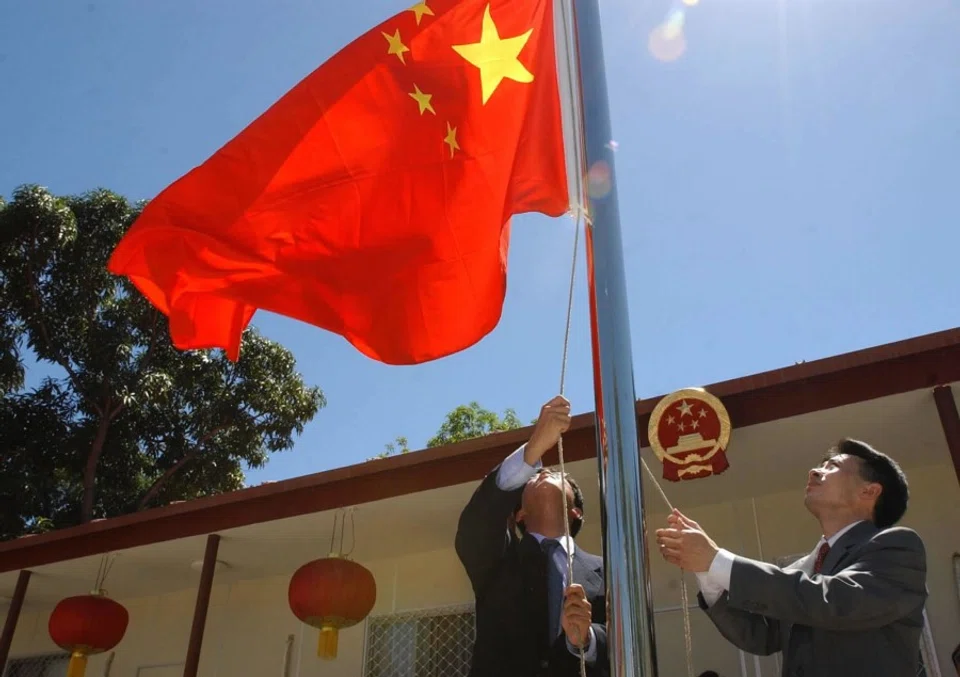
The plane slowly comes in to land at Presidente Nicolau Lobato International Airport in Dili, the capital of Timor-Leste. A quick scan out of the plane window yields a slight shock: the most prominent sight is an advertisement board with the white letters OPPO emblazoned on a green background. I learn later from the locals that China's OPPO and Korea's Samsung share the lead as the two most popular mobile phone brands among the East Timorese.
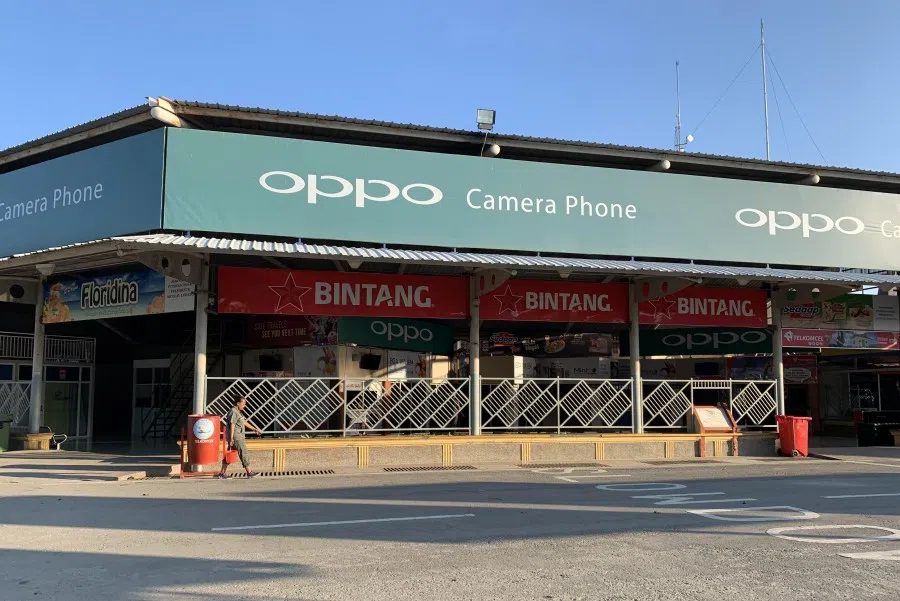
An airport staff jokes, "So much OPPO, passengers who don't know China brands might think this is called OPPO International Airport."
My next four days in Timor-Leste seem to bear out the fact that the China factor and its influence are filtering into emerging markets all over the world, including Timor-Leste.
China projects or not?
In Dili, there are three landmark projects that the Chinese government helped to build - the presidential palace, foreign ministry, and defence ministry and offices.

After Timor-Leste became a member of the China-led Asian Infrastructure Investment Bank (AIIB) in 2017, projects under China's Belt and Road Initiative began to land there. Among over 20 projects, three catch the eye. In the words of Xiao Jianguo, China's ambassador to Timor-Leste, one is a network, one is a road, and one is a port. He is referring to the national power grid, the Suai Highway, and the Tibar Bay Port.
The power grid is up and running, phase one of the Suai Highway was opened to traffic in November 2018, and the Tibar Bay Port is under construction. The highway and port will support the development of the oil and gas industry in Timor-Leste.

The new port is in the north of Timor-Leste, with a total investment of US$206 million for the first stage of construction. The project tender was won by French group Bolloré, constructed by China Harbour Engineering Company (CHEC). When complete, it will accommodate 7,000 standard containers.
At the Tibar Bay Port construction site, China-style slogans are everywhere, and for a second, I feel like I am in China. It is not until I catch sight of a few slogans featuring additional English versions that I come back to earth and realise we are still firmly in Southeast Asia.
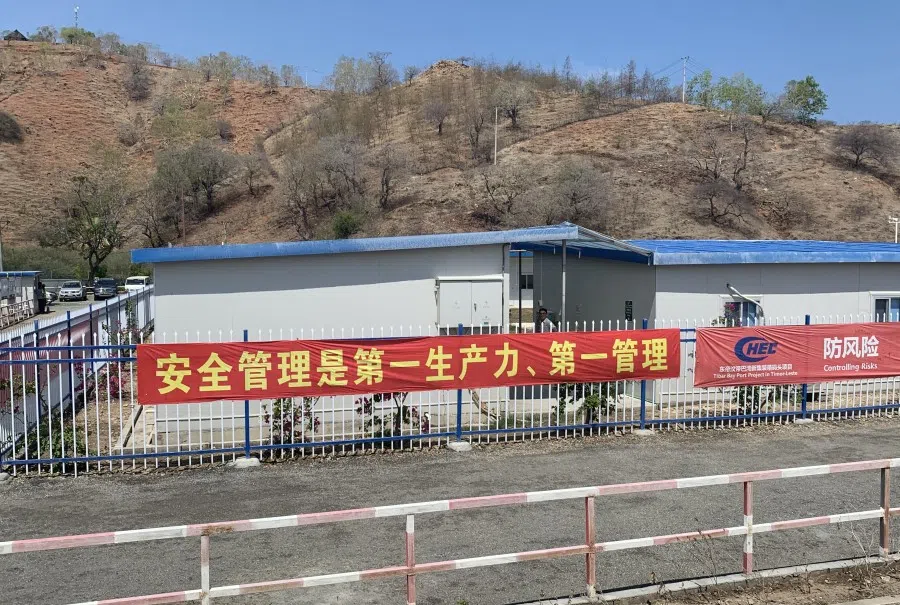
Wang Wei, general manager of China Harbour Timor, who is in charge of constructing the Tibar Bay Port, explains, "Our progress has been a bit slow. We put those slogans up on 1 October when China had its anniversary, to encourage the workers from China."
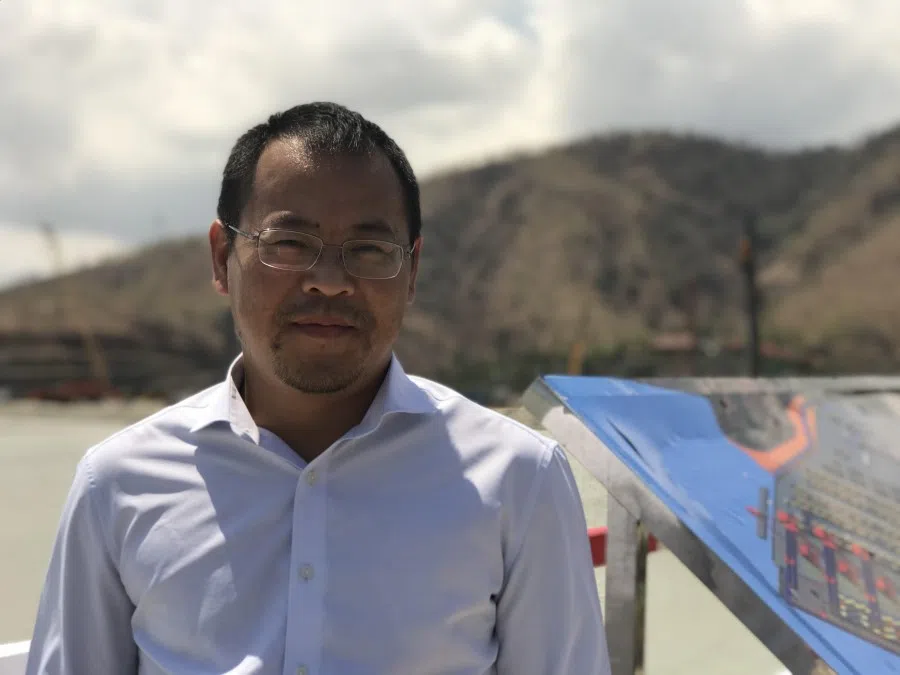
CHEC is a state-owned enterprise in China, but Wang Wei emphasises that the team is actually very cosmopolitan, including Chinese, French, Australians, Brazilians, Portuguese, and locals. Notices are generally in the local language Tetum, and in Chinese.
Some media reports have cited Tibar Bay Port as an example of China's growing influence in Timor-Leste. Wang Wei counters, "(The media) does not mention at all that it was the French who won this project, they only highlight CHEC. The fact is CHEC is just a contractor. After construction is complete, the project goes back to the French."
Timor-Leste vs China vs ASEAN
Some reports claim that Timor-Leste has not been successful in its application to join ASEAN (submitted in 2011), because it is close to China.
However, Timor-Leste's foreign minister Dionisio da Costa Babo Soares is quick to refute that allegation.
He says the fact that Timor-Leste is on good terms with China has nothing to do with its membership in ASEAN. The important thing is that the government has to get right its strategy in the Indo-pacific region, and deal with the challenges resulting from the competition between powers that is happening behind the BRI.
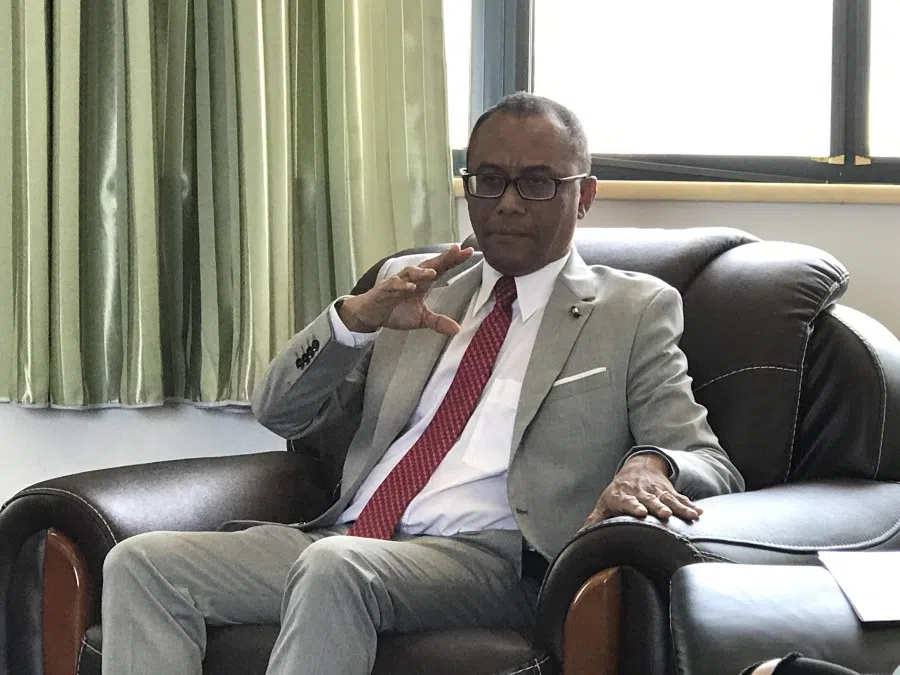
Mr Soares was in Singapore in July, when he also raised the issue of Timor-Leste's application to join ASEAN, during his meeting with Singapore's foreign minister Vivian Balakrishnan. Mr Soares says, "Timor-Leste is very clear that joining ASEAN means standing with the group when it comes to world powers. Timor-Leste's diplomatic policy has its national interests as the priority. The government will stand firm."
Former Timor-Leste president and Nobel Peace Prize winner José Ramos-Horta also scoffs at the idea that "the China factor is growing and attracting attention". In an interview at his home, Mr Ramos-Horta noted that most of such news is played up by the Australian media, adding drily, "I'm the one worried for Australia. Hasn't China bought up a lot of their resources?"
Complex relationships with Australia and China
Timor-Leste has a population of just 1.2 million in an area of 14,800 square kilometres (about 20 times the size of Singapore). Based on 2017 World Bank figures, its GDP is just about US$3 billion, which is just one-sixth that of Laos. So, why is China so interested in this little country, so far from China?
The main reason is, Timor-Leste has been gifted with a good strategic location, as well as natural resources.
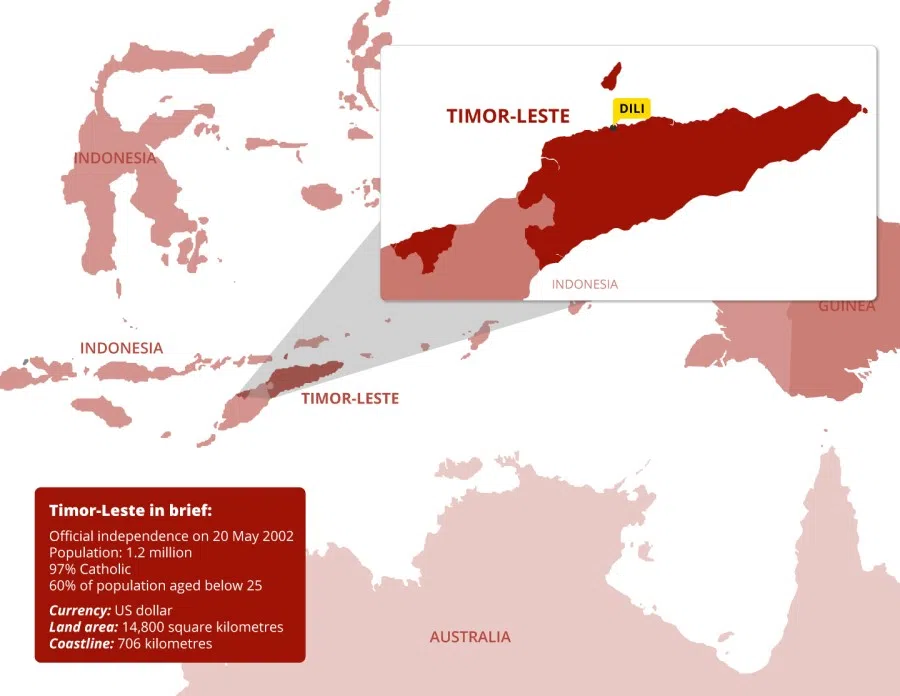
Professor Zhang Mingliang of the Institute of Southeast Asian Studies at Jinan University in Guangzhou points out that Timor-Leste is in the unique position of being a link between Southeast Asia and the South Pacific, and is a geopolitical hub between the Pacific and Indian oceans, while the Timor Sea contains rich oil deposits.
He says, "In recent years, China has been investing quite a bit in the South Pacific, and are clearly more interested than Europe and Japan in Timor-Leste."
As a small country, Timor-Leste's diplomatic strategy is to seek to maximise its interests while navigating among major world powers, while also trying to play the "China card" to nudge its neighbour Australia.
Timor-Leste's relationship with Australia is complex. International political scientist Simon Shen has written essays pointing out that Australia played a key role in Timor-Leste gaining independence, and also provided military support during the transition period. It has assisted Timor-Leste to the tune of tens of millions in US dollars each year, bringing it into Australia's sphere of influence.
However, in 2012, a former Australian intelligence officer revealed that the Australian government had deployed agents to listen in on Timor-Leste's state secrets to gain an edge in negotiations on maritime borders, leading to a dip in bilateral relations. After falling out with Australia, coupled with predictions that oil resources will run out in a few years, Timor-Leste needed the backing of another big country. Enter China, bearing its BRI package. And so, both sides hit it off and got closer.
In late September this year, the Chinese naval ship Qi Jiguang circled Australia while on tour in the South Pacific, heightening suspicion and concern in Canberra that China also has military ambitions, in addition to economic ambitions.
After 12 years of no visits to Timor-Leste by Australian prime ministers, current Australian PM Scott Morrison visited for the first time in August this year, in a show of friendship. He stated that Australia would help Timor-Leste develop its naval facilities, and provide high-speed internet service. Earlier in July, the Australian Parliament also passed a maritime border agreement giving Timor-Leste at least a 70% stake in the Greater Sunrise oilfield, as compared to 50-50 before.
All these moves are seen by Western media as concessions by Australia, to balance China's growing influence in the South Pacific.
"Old" vs "new" Chinese
As Chinese investments go up, so too the numbers of Chinese looking for business opportunities and jobs in Timor-Leste. Driving through the streets of Dili, Chinese-run stores are a common sight - minimarts, massage joints, Chinese eateries. Apparently, Chongqing hotpot is available too.
A 2017 report by Japan's Kyodo News says that out of 18,000 enterprise owners registered in Timor-Leste, at least 800 to 1,000 are from China, that number having grown since around 2013.
Prominent local Chinese businessman Tony Jape told Lianhe Zaobao that Chinese make up about 4% of the population in Timor-Leste, categorised as "old" or "new" Chinese.
So-called "old" Chinese refers to Chinese who migrated to Timor-Leste from China during the Portuguese colonial period or earlier, most of whom are Hakkas. "New" Chinese refers to Chinese who came to Timor-Leste after its civil war was settled in 1999, in search of business opportunities - these people mostly came from Fujian province. Mr Jape says the "old" Chinese used to be the majority, but now the numbers are just about equal. He himself is an "old" Chinese born and bred in Timor-Leste, in a family of property developers there, albeit having been schooled in Singapore.
According to World Bank figures, about 60% of the population in Timor-Leste is aged below 25. And the more pressing issue is that youth unemployment may be as high as 40%.
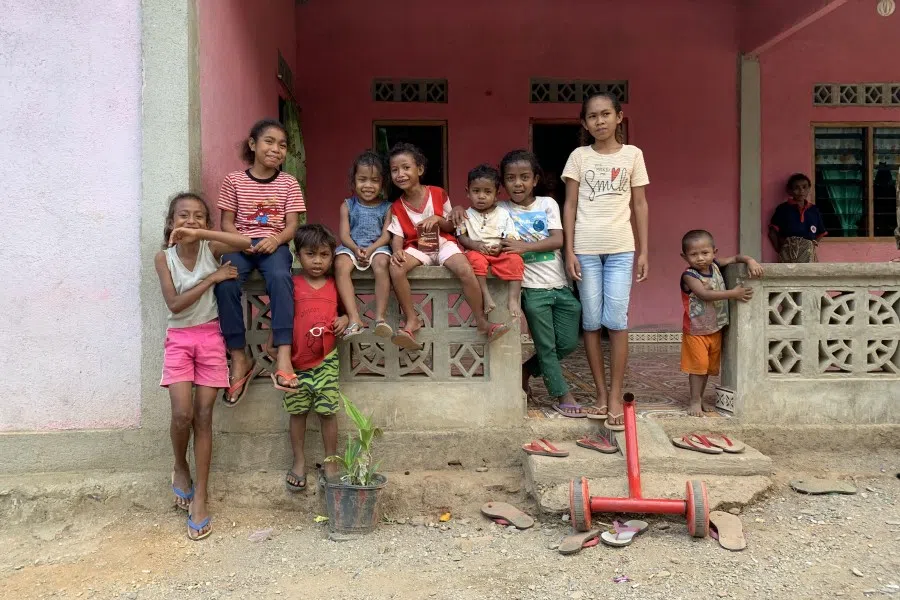
Dili tour guide Platao Lebre looked forward to China enterprises investing in Timor-Leste and bringing jobs for the locals. But the reality has not been as rosy as imagined, and he is worried that the East Timorese may not be able to compete against the Chinese.
He says, "The Chinese have a lot of funds and skills. East Timorese are generally not well educated, and we may not be able to compete against their workers. Some good positions may not come to us."
A Singaporean and a supermarket in Timor-Leste
"I was the first to build a cold storage facility in Timor-Leste. Nobody would dare to challenge me!"
Singaporean businessman Clarence Lim Hung Meng makes that proud comment as he takes media on a tour of his 3,000-tonne capacity facility.
After 17 years in farming, trade, and the supermarket business in Dili, 60-year-old Mr Lim is now a prominent member of the community who knows his way around. His Kmanek supermarket claims to be the largest one around, with two outlets in the city, while also being the supplier for small stores in the highlands.
Looking back, Mr Lim says, "The first few years were tougher. It wasn't easy dealing with officials. It's a lot better now." He adds that because the local workers are not well educated, it was also difficult to teach them to plant vegetables, but they slowly got the hang of it.

Mr Lim says he does collaborate with China companies in food supply and agriculture. On whether he feels that the "China factor" in Timor-Leste is growing, he notes that over the years, there has been a tremendous increase in the number of mainland Chinese, who handle most projects in Timor-Leste. He adds, "There is this street named Hudilaran, which is now recognised as 'Chinatown'."
However, Mr Lim says that while the Chinese are "all over, doing everything... their operational standards and their linkage to the rest of the world are limited". He also observes that the "old" Chinese community is more conservative, with limited resources, while the "new" Chinese are much more aggressive, with a lot more resources from China. "Most new businesses and buildings are by the 'new' Chinese," he notes.
In Singapore, Mr Lim used to be in the import/export trade. With his keen nose for business, when he read in the newspapers of Timor-Leste's independence, he figured they would need supplies, and decided to go for it. Since 2004, he has shifted his focus to Timor-Leste.
A few months ago, his wife (originally from Hunan) and six-year-old child also moved there. With the family together, Mr Lim no longer has to fly between Singapore and Timor-Leste.
He observes that the locals are friendlier towards Singaporean Chinese rather than mainland Chinese, while noting that the latter are the main driving force in creating jobs and pushing the economy. However, he and his wife are generally not treated differently, being together most of the time.
Opportunities aplenty
It might be surprising to learn that Singapore is the second largest foreign investor in Timor-Leste, after Australia. The main areas of investment are tourism and farming.
Mr Lim repeatedly emphasises that there are plenty of opportunities in the young Timor-Leste. "Since its independence in 2002, industries are not developed - tourism is just starting, and farming is only at about 1%. You might say it is lagging behind, but there are plenty of opportunities."
Based on personal experience, he also wants to correct the mistaken idea that Timor-Leste is not safe. He says, "Recently, the government budget did not go through and the police were not on duty, but nobody was stealing money or making trouble. To me, this is the safest country."
On what he likes best about Timor-Leste, he says, "There's no pressure, you can do whatever you like, and parking is free. Unlike Singapore, where everything is not allowed."
And on what he misses most about Singapore, this middle-aged gentleman shows his slight paunch and laughs, "The food. The food here is not as good as in Singapore."
The undiscovered Timor-Leste
If your idea of Timor-Leste still includes the bullets and jungles of the 80s and 90s, then you are out of date.
There is no more violence in Dili; one hears only the sea, traffic, and laughter. And of course, natural tourism resources.
"Explore the Undiscovered" - that is Timor-Leste's official tourism slogan.
Indeed, everything is still in its original state due to low tourism. Whether catching the sunrise in the highlands or whale- or dolphin-watching from a boat, this reporter was constantly wowed by Timor-Leste's unspoiled natural beauty.
So, what's fun to do in Timor-Leste? Interim tourism minister Fidelis Manuel Leite Magalhães strongly recommends two things: diving and snorkelling.
Mr Magalhães explains that the marine biodiversity in Timor-Leste is among the richest in the world, because it is located where the Pacific and Indian oceans meet, which makes it good for marine life. The corals are extraordinarily beautiful; in Timor-Leste there are no detriments to diving such as illegal dynamite fishing or coral bleaching.
He says, "We are different than Bali and Hawaii. They are good for surfing, we are good for diving. Our marine life is so rich. On a scale of 1 to 10, Timor-Leste is a 10. Hawaii is a 2."
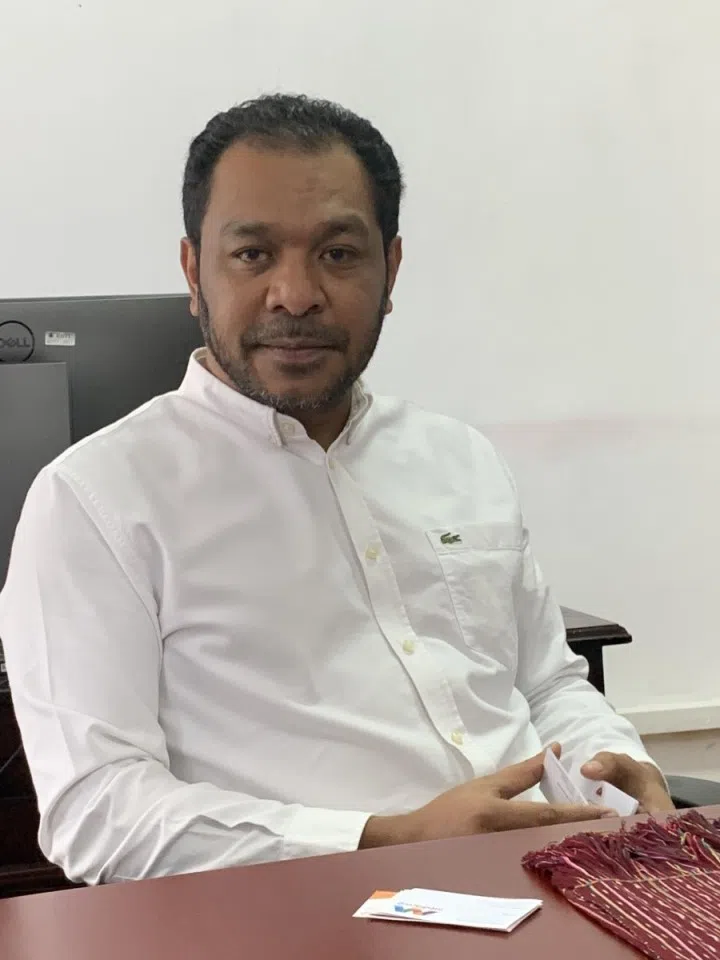
Mr Magalhães is hard-selling with good reason. For a long time, about 90% of Timor-Leste's national income came from petroleum and natural gas. But, with oil fields predicted to run dry in a few years, and limited jobs created for locals, the government is now giving the tourism industry a push, while private companies are also actively wooing foreign businesses.
Timor-Leste's tourism industry is worth about US$15 million. Mr Magalhães says right now it is making just a small contribution to the nation, but next year he intends to step up on promoting tourism, and hopes to attract 70,000 to 100,000 tourists annually within the next two to three years.
A Singaporean who declined to be named, who runs a gambling joint in Timor-Leste, is optimistic about the tourism industry.
He says, "This is virgin land, very natural. The beaches are much nicer than in Bali."
Infrastructure, flights need improvement
The natural resources are there, but external links need to be improved. A gamut of issues needs to be resolved, including poor infrastructure such as airport runways being too short, costly flights and visas (from US$306 for a one-way direct flight, US$277 for a return flight, and US$30 for a visa), and too few direct flights. To increase the frequency of flights, Air Timor is negotiating with Macau and Shenzhen to bring in more China tourists.
But no matter how much is done and how well it is done, political instability renders everything useless. A Singaporean working in Dili says because the president and prime minister do not see eye to eye, some appointments and the budget have not gone through. The GDP of Timor-Leste has gone down for two consecutive years, and "companies are also feeling the impact".
From standing up amid the ashes of war, to trying to build a heaven of natural eco-tourism, it is easy to say that everything is waiting to be developed. But it will take one or two generations, and also the strong political will of the nation's leaders.
In any case, give the youngest country in Asia some time. After all, it is only 17 years old.
(All photos by Sim Tze Wei unless otherwise stated.)

![[Big read] Paying for pleasure: Chinese women indulge in handsome male hosts](https://cassette.sphdigital.com.sg/image/thinkchina/c2cf352c4d2ed7e9531e3525a2bd965a52dc4e85ccc026bc16515baab02389ab)

![[Big read] How UOB’s Wee Ee Cheong masters the long game](https://cassette.sphdigital.com.sg/image/thinkchina/1da0b19a41e4358790304b9f3e83f9596de84096a490ca05b36f58134ae9e8f1)

